Security Information and Event Management (SIEM) solutions are designed to automate the collection of event log data from various security devices – helping security professionals make sense of the thousands of events generated through a common management console.
SIEM products use data aggregation and event correlation features similar to those of network-management software products but applies them to event logs generated from security devices such as firewalls, routers, proxy servers, intrusion-detection systems, email programs and antivirus software. SIEM products typically normalize data in order to apply user created rules or out-of-the-box rules. Typically SIEM solutions will translate events such as Cisco and Check Point Software alerts into a common format so the data can be correlated. Like network-management software, SIEM tools generally consist of server software, agents installed either on servers or security devices, and a central management console. SIEM solutions may include an appliance installed on a network for collection.
The below products automate the manual process of collecting event-log data from file systems, security appliances and other network devices like firewalls, routers, proxy servers, intrusion-detection systems, anti-virus software, in-line content filters, scanners, biometric devices, crypto suites and sensors. When deciding on a specific solution you need to have an accurate inventory of what you have before you choose a SIEM product. If the SIEM vendor can’t monitor all your devices, you will need to collect the data manually or use more than one tool.
The ROI for such systems is based on the time savings and additional productivity in having a single view of your security events and helping you to quickly spot problems through alerting and messaging. Deep forensics of specific events along with storage and archival of events are other factors to consider. Another major benefit of SIEM is in helping you create reports for regulatory compliance.
NUSPIRE

Managed Security Service Provider backed by industry-leading big data and deep human analytics providing enterprise networks with dispersed location protection.
- Sensor, agent or cloud configurable
- Compliance
- Real-time alerts
- Event correlation and analysis
- Multi-source log ingestion
- Shared portal and full nuSecure services integration
- Zero hardware or infrastructure costs to purchase, operate or integrate
- Customized parsers to integrate with any customer or industry specific technology
- 400 days of log data collection, facilitating threat hunting dwell time reduction
LOGRHYTHM

LogRhythm’s security intelligence and analytics platform enables organizations to detect, contain and neutralize cyber threats with threat lifecycle management.
- Fragmented workflows
- Lack of centralized visibility
- Lack of automation
- Segmented threat detection
- Information overload and alarm fatigue
- Swivel-chair analysis across multiple UIs
- Lack of metrics to understand maturity
ALIENVAULT
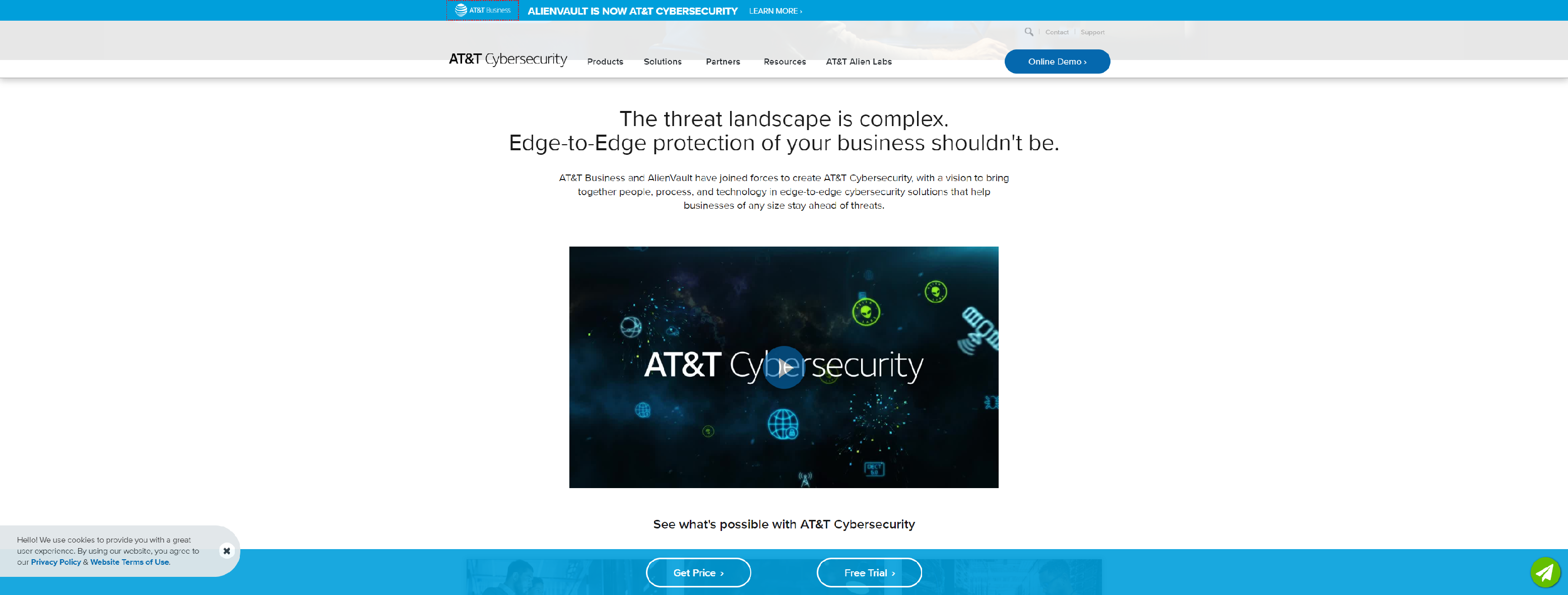
At AT&T Cybersecurity our mission is to provide phenomenal threat intelligence, collaborative defense & effective security for organizations of all sizes.
- Asset discovery
- Vulnerability assessment
- Intrusion detection
- Behavioral monitoring
- SIEM event correlation
SOLARWINDS

SolarWinds IT monitoring and management tools are built for SysAdmins and network engineers who need powerful and affordable tools. Get a free trial today.
- Integrated compliance reporting tools
- Event-time correlation of security events
- Automated threat remediation
- Advanced search and forensic analysis
- File integrity monitoring
- USB device monitoring
MICROFOCUS
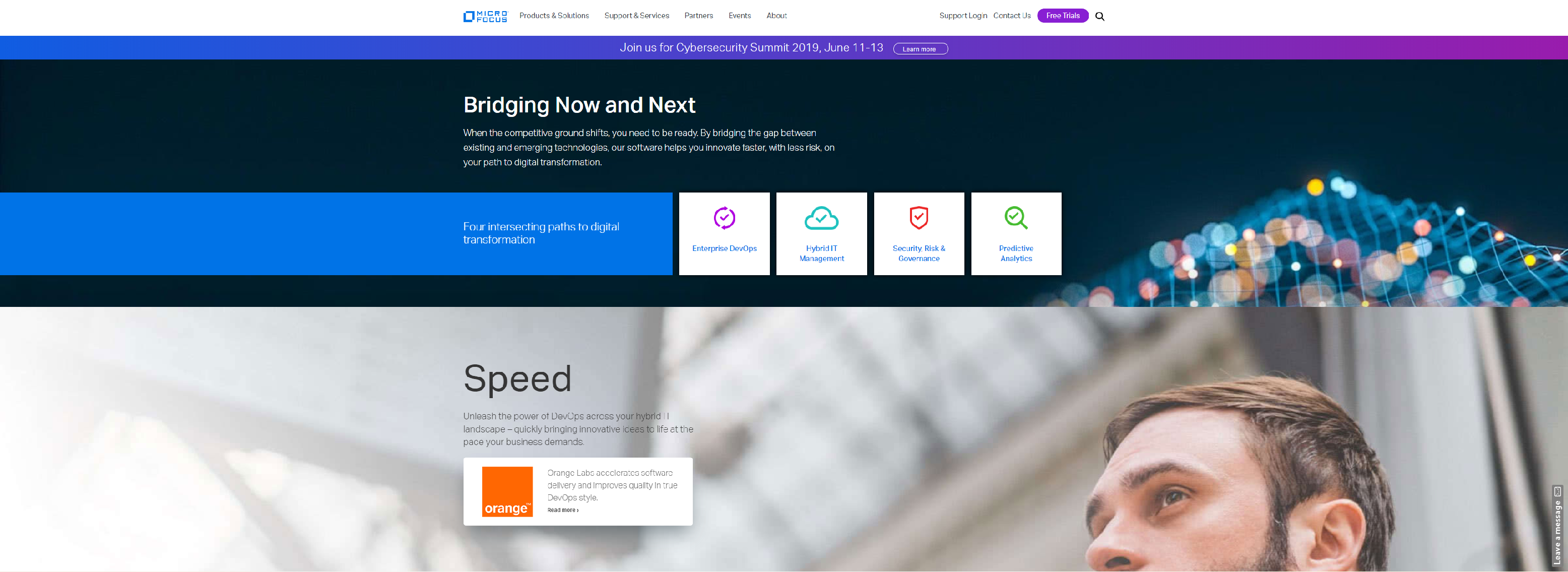
Micro Focus offers enterprise application software that provides scalable, industry-leading solutions across Cloud Management, DevOps, Hybrid IT, Security and Risk, and Predictive Analytics.
- Powerful distributed real-time data correlation
- Workflow automation, security orchestration
- Community-driven security content
- Multi-Tenancy and unified permissions matrix
- ArcSight Data Platform and Event Broker integration
- ArcSight Investigate integration
HUNTSMANSECURITY
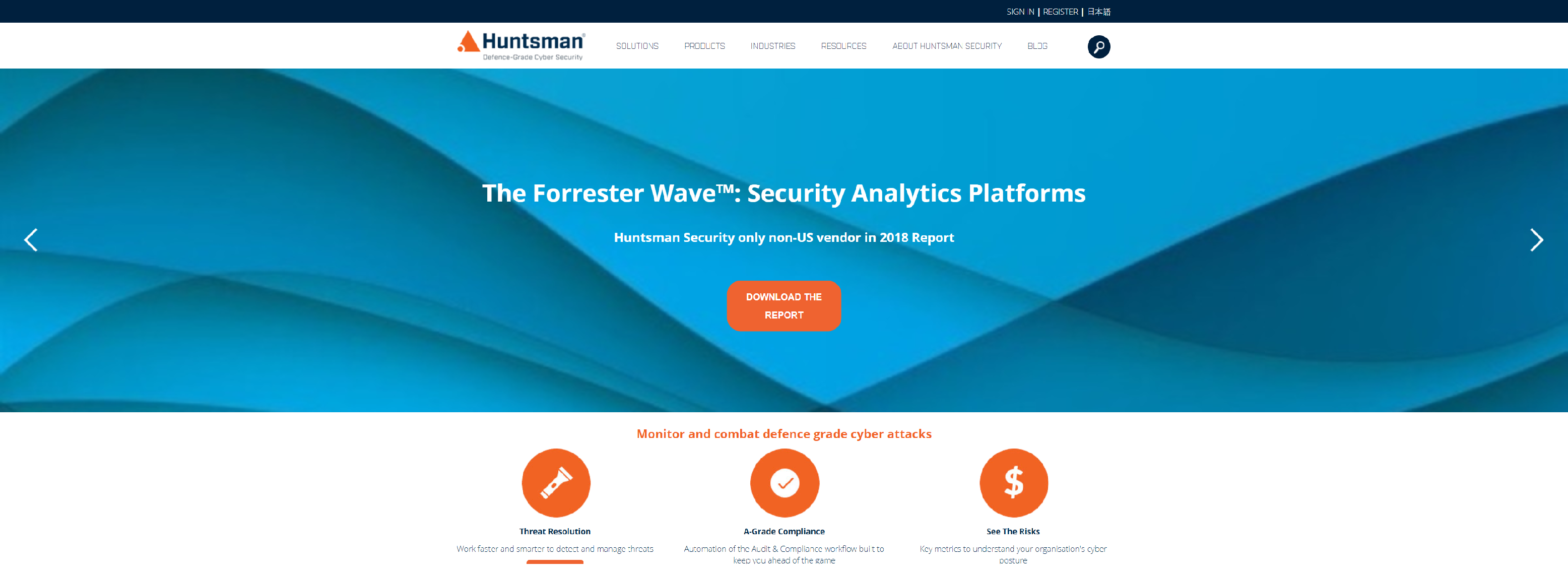
Huntsman Security provides a multi-tenanted, high volume, and high-fidelity SIEM and security analytics platform trusted by defence, intelligence and law enforcement agencies worldwide.
- Flexibility and Speed
- Analysis and Response
- Security Visibility and Business Intelligence
- Extensive Data Source Support
FORTRA

At Fortra-Intermapper is network monitoring software with network mapping for Windows, Linux and Mac. Map and monitor all IP enabled devices and see your entire environment.
- Rapid Threat Detection and Response
- Separate Critical Events from the Noise
- Complete Audit Trail
- Translate Data into Actionable Intelligence
LOGPOINT
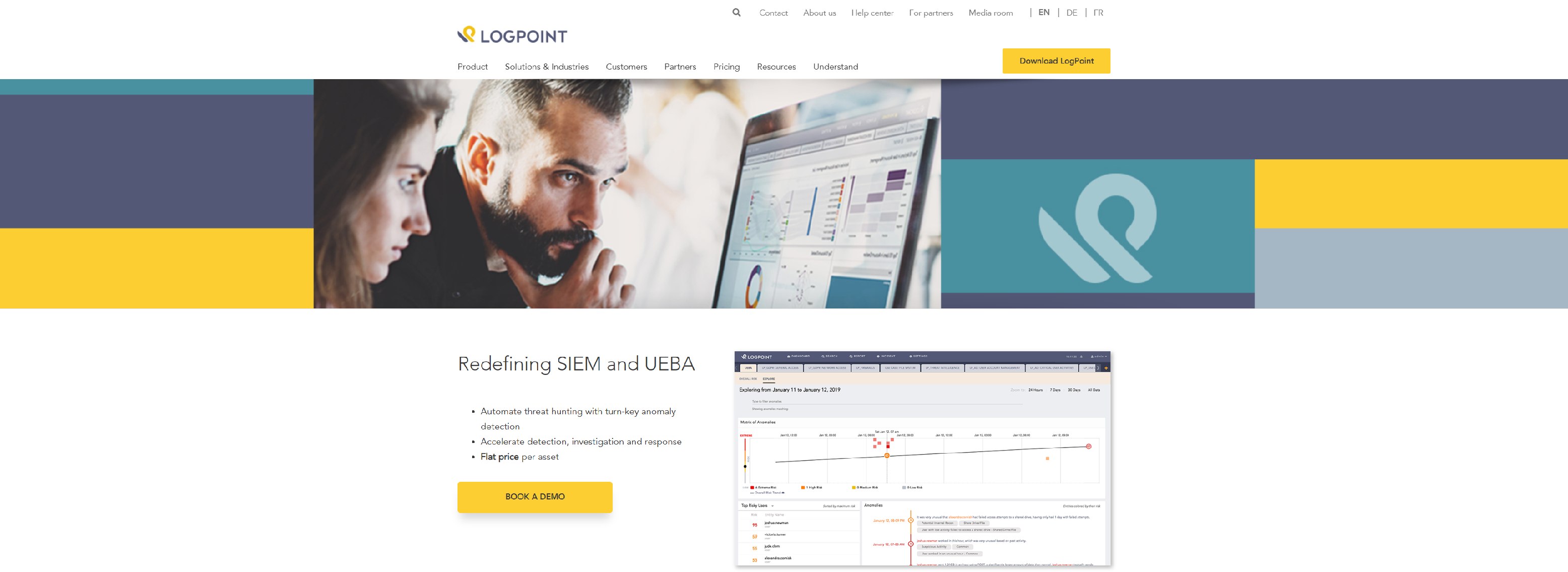
LogPoint’s SIEM software helps you solve specific security management challenges – whether the goal is compliance, forensics or operational insight.
- Redefining SIEM and UEBA
- Investigate and Analyze
- Fits your Security Strategy
- Respond
SPLUNK
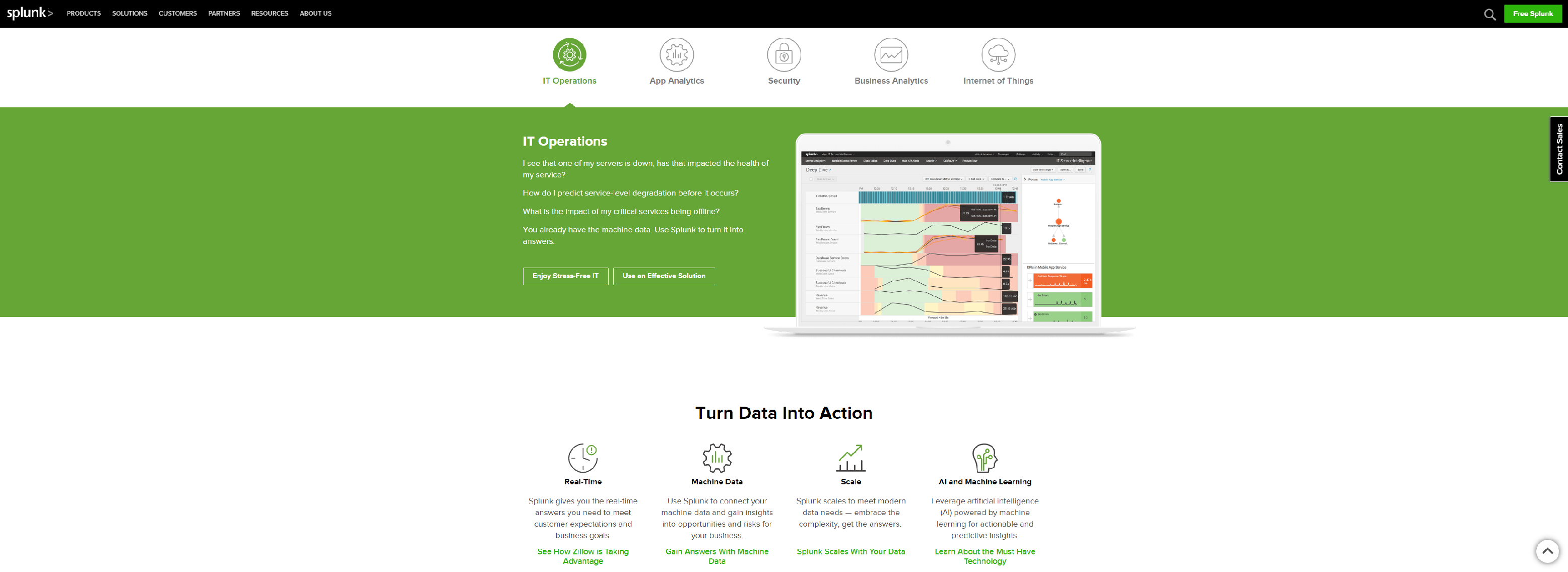
Splunk Inc. turns machine data into answers with the leading platform to tackle the toughest IT, IoT and security challenges. Use Splunk to search, monitor, analyze and visualize machine data.
- Improve Security Operations
- Investigative Tools to Respond Fast
- Automate and Respond
What is the purpose of Security Information and Event Management (SIEM)
The purpose of Security Information and Event Management (SIEM) is to provide organizations with a comprehensive solution for managing and analyzing security-related data. SIEM aims to enhance an organization’s ability to detect, respond to, and mitigate security threats and incidents. Here are the key purposes of SIEM:
1. Centralized Data Collection
SIEM systems aggregate security-related data from diverse sources, such as network devices, servers, applications, and security tools, into a unified platform. This centralized collection simplifies the management of security data and provides a holistic view of the organization’s security posture.
2. Real-Time Threat Detection
By continuously monitoring and analyzing data in real-time, SIEM systems can identify and alert on potential security threats and incidents. This enables organizations to detect suspicious activities or anomalies as they occur, allowing for prompt response and mitigation.
3. Incident Response
SIEM facilitates efficient incident response by providing detailed information and context about security events. When a potential threat is detected, SIEM can generate alerts, provide relevant data, and help security teams investigate and address the incident effectively.
4. Data Correlation and Analysis
SIEM systems correlate data from multiple sources to identify patterns and relationships that may indicate a security threat. This correlation helps in detecting complex attack vectors that may not be apparent when looking at individual data sources in isolation.
5. Compliance and Reporting
Many organizations are subject to regulatory requirements that mandate the logging and reporting of security-related events. SIEM helps organizations meet these compliance requirements by providing tools for generating detailed reports, audit trails, and documentation.
6. Threat Intelligence Integration
SIEM systems often integrate with threat intelligence feeds to enhance their ability to detect known threats. By incorporating external threat intelligence, SIEM can provide more accurate and contextually relevant alerts.
7. Historical Data Analysis
SIEM systems store and analyze historical security data, allowing organizations to track long-term trends, investigate past incidents, and understand how security threats evolve over time.
8. Security Posture Improvement
Through ongoing monitoring, analysis, and reporting, SIEM helps organizations assess and improve their overall security posture. It provides insights into potential vulnerabilities, helps refine security policies, and supports strategic decision-making.
What are the benefits of Security Information and Event Management (SIEM)
Security Information and Event Management (SIEM) offers several key benefits to organizations by enhancing their ability to manage and respond to security threats. Here’s a breakdown of the primary advantages:
Improved Threat Detection and Response
- Real-Time Monitoring: SIEM systems provide continuous monitoring and analysis of security events, allowing for the rapid detection of potential threats and anomalies.
- Automated Alerts: SIEM can generate alerts based on predefined rules and correlations, enabling security teams to quickly address potential security incidents.
Enhanced Visibility and Insight
- Centralized Data Aggregation: By consolidating data from various sources such as network devices, servers, and applications, SIEM offers a unified view of the organization’s security landscape.
- Comprehensive Reporting: SIEM tools provide detailed dashboards and reports that help security teams understand trends, patterns, and potential vulnerabilities.
Efficient Incident Management
- Contextual Information: SIEM systems provide context around security events, helping teams investigate and respond to incidents more effectively.
- Incident Tracking: It helps in managing the lifecycle of security incidents, from detection through investigation to resolution.
Enhanced Security Posture
- Correlation and Analysis: SIEM systems correlate data from multiple sources to identify complex attack patterns and potential security threats that may not be apparent in isolated data.
- Proactive Threat Hunting: With historical data and trend analysis, SIEM facilitates proactive threat hunting and helps in identifying potential weaknesses before they can be exploited.
Compliance and Reporting
- Regulatory Compliance: Many industries have specific regulatory requirements for data security and privacy. SIEM helps organizations meet these requirements by providing detailed logging, reporting, and audit trails.
- Audit Readiness: SIEM tools streamline the process of generating compliance reports and demonstrating adherence to security standards and regulations.
Operational Efficiency
- Automated Processes: SIEM automates many security monitoring tasks, reducing the manual effort required from security teams and allowing them to focus on more strategic activities.
- Integration with Other Tools: SIEM systems often integrate with other security solutions, such as threat intelligence platforms and incident response tools, to enhance overall security operations.
Historical Data Analysis
- Trend Identification: SIEM systems store historical data, which helps in identifying long-term trends and understanding how security threats evolve over time.
- Post-Incident Analysis: Historical data enables detailed post-incident analysis, helping organizations learn from past incidents and improve their security measures.
Enhanced Threat Intelligence
Integration with Threat Feeds: Many SIEM systems integrate with external threat intelligence feeds to provide up-to-date information on known threats, vulnerabilities, and attack techniques.
SIEM provides organizations with a robust framework for detecting and responding to security threats, enhancing overall visibility into security events, and ensuring compliance with regulatory requirements. By centralizing data, automating threat detection, and improving incident management, SIEM helps organizations strengthen their security posture and operational efficiency.
Frequently Asked Questions
Q1: What is SIEM software?
A1: SIEM software is a solution that combines Security Information Management (SIM) and Security Event Management (SEM) to provide a comprehensive approach to monitoring, analyzing, and responding to security events within an organization. It collects data from various sources, analyzes it in real-time, and generates alerts to help identify and manage potential security threats.
Q2: How does SIEM software work?
A2: SIEM software works by collecting and aggregating logs and security data from various sources, such as network devices, servers, applications, and security tools. It normalizes this data into a common format, correlates events to identify patterns or anomalies, and generates alerts based on predefined rules or behavioral analysis. The software also provides reporting and visualization tools to help security teams understand and respond to security incidents.
Q3: What are the main components of SIEM software?
A3: The main components of SIEM software include:
- Data Collection: Gathers log and event data from various sources.
- Data Aggregation: Centralizes and consolidates data for analysis.
- Data Normalization: Converts data into a consistent format.
- Event Correlation: Analyzes data to identify patterns and relationships.
- Alerting: Generates notifications for potential security incidents.
- Incident Management: Provides tools for managing and responding to security events.
- Reporting and Dashboards: Offers visualizations and reports for monitoring and compliance.
Q4: What are the key benefits of using SIEM software?
A4: Key benefits of SIEM software include:
- Real-Time Threat Detection: Enables quick identification of potential threats.
- Enhanced Visibility: Provides a comprehensive view of security events across the organization.
- Efficient Incident Response: Facilitates quick and informed responses to security incidents.
- Compliance: Helps meet regulatory requirements by providing detailed logging and reporting.
- Operational Efficiency: Automates many security monitoring tasks, improving overall efficiency.
Q5: What types of organizations benefit from SIEM software?
- A5: SIEM software benefits a wide range of organizations, from small businesses to large enterprises. It is particularly valuable for:
- Regulated Industries: Organizations in sectors like finance, healthcare, and government that have stringent compliance requirements.
- Large Enterprises: Companies with complex IT environments and extensive security needs.
- Organizations with High Security Needs: Entities that need advanced threat detection and response capabilities due to the nature of their operations or the sensitivity of their data.
Q6: How does SIEM software differ from other security solutions?
A6: SIEM software differs from other security solutions in that it focuses on centralizing and correlating data from various sources to provide a comprehensive view of security events. While other solutions like firewalls or antivirus software may focus on specific types of threats or protection mechanisms, SIEM software provides broader visibility and context by aggregating data from across the entire IT environment.
Q7: Can SIEM software be used in the cloud?
A7: Yes, many SIEM solutions are available in cloud-based versions, offering flexibility and scalability. Cloud-based SIEM solutions can be particularly advantageous for organizations with dynamic environments or those looking to reduce the burden of managing on-premises infrastructure. These solutions often provide similar functionalities as on-premises systems but with the added benefits of cloud computing, such as easier scalability and lower upfront costs.
How much do Security Information and Event Management (SIEM) Software typically cost?
The cost of Security Information and Event Management (SIEM) software can vary widely based on several factors, including the size of the organization, the scale of deployment, the specific features required, and whether the solution is cloud-based or on-premises. Here’s a general breakdown of the potential costs:
1. Initial Costs:
- Licensing Fees: SIEM software is typically licensed either by the amount of data ingested, the number of log sources, or the number of users. For on-premises solutions, licensing can be a significant upfront cost.
- Implementation and Setup: Costs for professional services to deploy and configure the SIEM solution. This can include initial setup, integration with other systems, and customization.
2. Ongoing Costs:
- Subscription Fees: For cloud-based SIEM solutions, you’ll typically pay a subscription fee based on data volume, number of users, or other metrics.
- Maintenance and Support: Annual maintenance and support fees, which may cover updates, technical support, and troubleshooting.
- Data Storage: Costs related to storing historical data, which can be substantial depending on the volume and retention period.
3. Additional Costs:
- Training: Costs for training staff to use and manage the SIEM system effectively.
- Upgrades: Periodic upgrades or additional features may involve additional costs.
- Integration: Costs associated with integrating SIEM with other security tools and IT systems.
Cost Estimates:
Small to Mid-Sized Organizations: For smaller organizations or those with less demanding requirements, SIEM solutions might start around $10,000 to $50,000 annually for a basic subscription or licensing. Cloud-based options may have lower initial costs but could incur higher recurring fees based on data volume.
Large Enterprises: For larger organizations or those with extensive needs, the costs can range from $100,000 to several million dollars annually. This range covers comprehensive on-premises solutions, extensive data ingestion, and advanced features.
Cloud-Based SIEM Solutions: Generally offer flexible pricing models based on data volume and the number of users. Monthly fees can range from a few thousand dollars to tens of thousands, depending on the scale and complexity of the deployment.